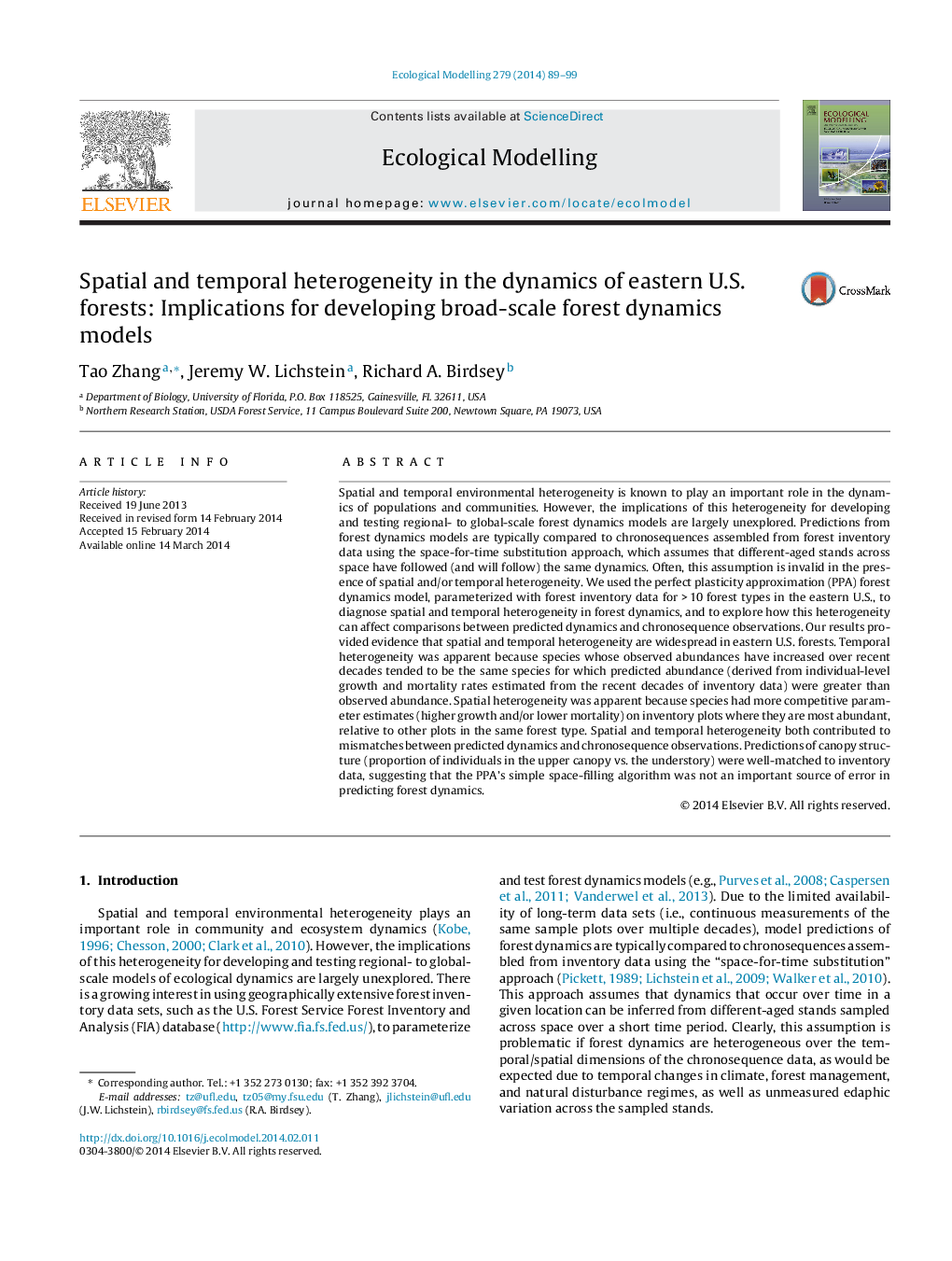| کد مقاله | کد نشریه | سال انتشار | مقاله انگلیسی | نسخه تمام متن |
|---|---|---|---|---|
| 4375977 | 1617467 | 2014 | 11 صفحه PDF | دانلود رایگان |
عنوان انگلیسی مقاله ISI
Spatial and temporal heterogeneity in the dynamics of eastern U.S. forests: Implications for developing broad-scale forest dynamics models
ترجمه فارسی عنوان
ناهمگونی فضایی و زمانی در پویایی جنگل های شرقی ایالات متحده: پیامدهای توسعه مدل های دگرگونی جنگل گسترده
دانلود مقاله + سفارش ترجمه
دانلود مقاله ISI انگلیسی
رایگان برای ایرانیان
موضوعات مرتبط
علوم زیستی و بیوفناوری
علوم کشاورزی و بیولوژیک
بوم شناسی، تکامل، رفتار و سامانه شناسی
چکیده انگلیسی
Spatial and temporal environmental heterogeneity is known to play an important role in the dynamics of populations and communities. However, the implications of this heterogeneity for developing and testing regional- to global-scale forest dynamics models are largely unexplored. Predictions from forest dynamics models are typically compared to chronosequences assembled from forest inventory data using the space-for-time substitution approach, which assumes that different-aged stands across space have followed (and will follow) the same dynamics. Often, this assumption is invalid in the presence of spatial and/or temporal heterogeneity. We used the perfect plasticity approximation (PPA) forest dynamics model, parameterized with forest inventory data for >Â 10 forest types in the eastern U.S., to diagnose spatial and temporal heterogeneity in forest dynamics, and to explore how this heterogeneity can affect comparisons between predicted dynamics and chronosequence observations. Our results provided evidence that spatial and temporal heterogeneity are widespread in eastern U.S. forests. Temporal heterogeneity was apparent because species whose observed abundances have increased over recent decades tended to be the same species for which predicted abundance (derived from individual-level growth and mortality rates estimated from the recent decades of inventory data) were greater than observed abundance. Spatial heterogeneity was apparent because species had more competitive parameter estimates (higher growth and/or lower mortality) on inventory plots where they are most abundant, relative to other plots in the same forest type. Spatial and temporal heterogeneity both contributed to mismatches between predicted dynamics and chronosequence observations. Predictions of canopy structure (proportion of individuals in the upper canopy vs. the understory) were well-matched to inventory data, suggesting that the PPA's simple space-filling algorithm was not an important source of error in predicting forest dynamics.
ناشر
Database: Elsevier - ScienceDirect (ساینس دایرکت)
Journal: Ecological Modelling - Volume 279, 10 May 2014, Pages 89-99
Journal: Ecological Modelling - Volume 279, 10 May 2014, Pages 89-99
نویسندگان
Tao Zhang, Jeremy W. Lichstein, Richard A. Birdsey,
